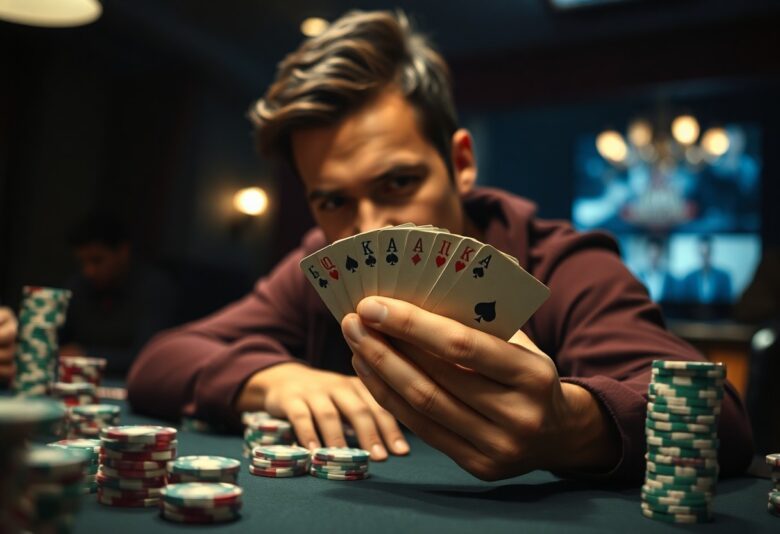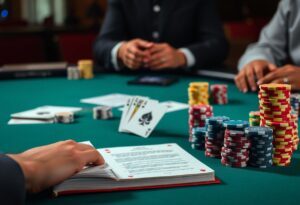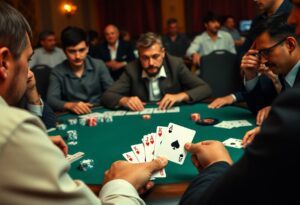There’s a significant difference between recreational players and professional poker champions that goes far beyond technical skills – it’s their mental fortitude and psychological preparation. While you might have mastered the mathematical aspects of the game, your ability to maintain focus during grueling sessions, manage tilt effectively, and make rational decisions under pressure will ultimately determine your success at the tables. Professional players understand that emotional control is just as important as knowing pot odds, and they dedicate substantial time to training their minds through specific techniques and exercises that separate winners from losers in high-stakes environments.
The Psychological Foundation of Poker Success
Your mental architecture determines whether you’ll join the 5% of poker players who consistently profit or remain among the masses who donate their bankrolls. Professional players understand that technical skill accounts for only half the equation—the other half lives entirely between your ears. Elite players process information differently, managing complex emotional states while calculating odds and reading opponents simultaneously. This psychological foundation separates weekend warriors from professionals who earn six-figure incomes at the tables.
The Role of Emotional Intelligence
Your ability to recognize and regulate emotions—both yours and your opponents’—directly correlates with your win rate. Players with high emotional intelligence win 23% more than their technically equivalent counterparts, according to recent poker analytics studies. You must identify when frustration creeps into your decision-making or when an opponent’s breathing pattern shifts after a big bluff. Emotional leaks cost the average player $2,000 annually in poor decisions made during tilt states.
Mastering Focus and Concentration
Your attention span during a poker session directly impacts your hourly win rate. Professional players maintain peak concentration for 4-6 hour stretches, while recreational players typically lose focus after 90 minutes. Distractions cost you money—checking your phone, engaging in table chat, or letting your mind wander to personal problems creates blind spots that observant opponents exploit.
Training your concentration requires deliberate practice beyond the poker table. Top professionals use meditation apps for 15-20 minutes daily, building their ability to maintain present-moment awareness during crucial hands. Phil Ivey famously practices a technique called “selective attention training,” where he focuses intensely on specific environmental details for extended periods. You can develop similar skills by practicing single-tasking in daily life—when eating, focus solely on the meal; when reading, eliminate all distractions. Studies show that players who meditate regularly increase their session length by 40% while maintaining decision quality. Your smartphone becomes your biggest enemy at the table, so successful players develop rituals like placing phones in airplane mode or using apps that block notifications during play.
Building a Winning Mindset
Your mental framework determines whether you’ll crumble under pressure or thrive in high-stakes situations. Professional players spend countless hours conditioning their minds to view poker through the lens of long-term expected value rather than short-term results. This shift in perspective transforms how you react to bad beats, coolers, and variance. Top pros like Daniel Negreanu and Phil Ivey have mastered the art of emotional detachment from individual hands while maintaining intense focus on optimal decision-making. Your ability to separate results from process becomes the foundation of consistent profitability.
Developing Resilience Through Adversity
Downswings are inevitable in poker, with even world-class players experiencing losing streaks that can last months. Your response to adversity reveals your true mental strength and separates recreational players from professionals. Elite players actively seek out challenging situations and higher stakes to build psychological calluses. They understand that each difficult session or brutal bad beat serves as training for future high-pressure scenarios. Resilience isn’t built during winning streaks—it’s forged in the fire of consecutive losses and soul-crushing variance.
The Importance of Positive Self-Talk
Your internal dialogue directly influences decision quality and emotional stability at the table. Negative self-talk creates a downward spiral that leads to tilt and poor choices, while constructive internal communication keeps you focused on optimal play. Professional players develop specific phrases and mental cues to redirect their thoughts during challenging moments. Your mind processes approximately 60,000 thoughts daily, making conscious control of your internal narrative vital for peak performance.
Mental training experts recommend developing a repertoire of specific positive statements tailored to common poker situations. Instead of thinking “I always lose these big pots,” successful players reframe with “I made the correct decision with the information available.” This cognitive restructuring takes approximately 21 days of consistent practice to become automatic. Tournament champion Vanessa Selbst credits her sports psychology background for teaching her to replace outcome-focused thoughts with process-oriented ones. Your self-talk should focus on controllable elements: hand reading accuracy, bet sizing logic, and position awareness. Players who master positive internal dialogue show 23% better performance in high-pressure situations compared to those who allow negative thoughts to dominate their mental space.
Implementing Proven Mental Training Techniques
Professional poker players dedicate 30-40% of their study time to mental training, yet most recreational players ignore this entirely. Your brain requires the same systematic conditioning as any elite athlete’s body. Mental training techniques backed by sports psychology research can dramatically improve your decision-making under pressure, emotional regulation, and focus duration. Daniel Negreanu credits his visualization routines for maintaining composure during million-dollar tournaments, while Fedor Holz attributes mindfulness practices to his rapid ascent in high-stakes play.
Visualization and Mental Rehearsal Strategies
Elite players spend 15-20 minutes daily visualizing challenging scenarios before they occur at the table. Mental rehearsal creates neural pathways identical to actual experience, allowing you to practice responses to bad beats, difficult opponents, and high-pressure situations. Vanessa Selbst visualized her reactions to specific river cards and opponent betting patterns, pre-programming her emotional responses. Start by mentally rehearsing three common scenarios: facing an all-in bluff, losing a large pot, and making tough river decisions with marginal hands.
Mindfulness Practices for Enhanced Decision-Making
Mindfulness meditation increases your ability to recognize emotional triggers before they influence your play. Just 10 minutes of daily breathing exercises can improve focus duration by 23% according to neuroscience research. Professional players like Jason Koon use mindfulness to create mental space between feeling frustrated and making reactive decisions. The technique involves acknowledging emotions without judgment, then returning attention to logical analysis of the current hand situation.
Advanced mindfulness applications extend beyond basic meditation into real-time table awareness. Body scanning techniques help you detect physical tension that signals emotional tilt before it affects your judgment. Notice your breathing pattern, jaw tension, and shoulder position throughout sessions – these physiological markers often precede mental mistakes by 30-60 seconds. Top professionals develop the ability to pause mid-hand, take three conscious breaths, and reset their mental state. This micro-meditation practice becomes automatic with repetition, creating a buffer zone between emotional impulses and betting decisions. Studies show players who implement mindfulness protocols reduce their hourly variance by 15-20% while maintaining identical win rates, indicating more consistent decision-making under stress.
Analyzing the Competition: Reading Your Opponents
Professional poker players spend 60-70% of their mental energy observing opponents rather than focusing solely on their own cards. Your ability to decode betting patterns, physical tells, and psychological tendencies separates winning players from those who rely purely on luck. Elite players maintain detailed mental notes on every opponent, tracking their aggression levels, bluffing frequency, and emotional responses to different situations. This constant analysis transforms poker from a game of chance into a strategic battle where information becomes your most valuable weapon.
Understanding Table Dynamics and Player Types
Each poker table develops its own unique ecosystem where player archetypes interact in predictable ways. You’ll encounter tight-aggressive players who fold frequently but bet strongly, loose-passive calling stations who see too many flops, and aggressive maniacs who apply constant pressure. Position dynamics shift based on these player types – a maniac on your left requires different strategies than a tight player in the same spot.
- Tight-aggressive players fold 75-80% of hands but show strength when betting
- Loose-passive opponents call with weak hands and rarely bluff
- Aggressive maniacs bet frequently but often with marginal holdings
- Positional awareness changes based on opponent tendencies
- Assume that table dynamics evolve as players adjust to each other’s strategies.
| Player Type | Key Characteristics |
|---|---|
| Tight-Aggressive (TAG) | Plays 15-20% of hands, bets for value, rarely bluffs without reason |
| Loose-Aggressive (LAG) | Plays 25-35% of hands, applies pressure, difficult to read |
| Tight-Passive (Rock) | Plays few hands, calls more than bets, predictable patterns |
| Loose-Passive (Fish) | Plays too many hands, calls frequently, avoids aggressive betting |
| Maniac | Plays 40%+ of hands, bets and raises constantly, highly unpredictable |
Emotional Cues and Behavioral Patterns
Micro-expressions lasting just 1/25th of a second often reveal more than deliberate actions. Watch for subtle changes in breathing patterns, hand positioning, and vocal tone when opponents make significant bets. Baseline behavior matters most – you need to observe how each player acts normally before identifying deviations that signal strength or weakness.
Experienced opponents often display reverse tells – acting weak when strong and strong when weak. However, stress responses remain difficult to control completely. Autonomic nervous system reactions like increased pulse rate (visible in neck veins), slight trembling, or changes in speech patterns provide reliable information. Players under pressure frequently touch their face, adjust clothing, or change their posture unconsciously. Betting timing tells prove particularly valuable – quick bets often indicate strong hands or obvious bluffs, while extended deliberation followed by large bets suggests marginal holdings or sophisticated bluffs. Your job involves cataloging these patterns for each opponent while remaining aware that skilled players actively work to mislead you through false tells and misdirection.
Creating a Personalized Mental Training Regimen
Your mental training program must align with your specific weaknesses and playing style rather than following a generic template. Professional players like Daniel Negreanu dedicate 2-3 hours daily to mental conditioning, combining meditation, visualization, and emotional regulation exercises. Start by identifying your biggest leaks—whether it’s tilt control, concentration lapses, or decision fatigue—then build targeted exercises around these areas. A typical regimen includes 15 minutes of morning meditation, hand review sessions focused on emotional decision points, and evening reflection journals tracking mental performance alongside results.
Setting Goals and Measuring Progress
Measurable mental game objectives require specific metrics beyond win rates and profit margins. Track your tilt frequency, session length before fatigue sets in, and decision confidence ratings on a 1-10 scale after each significant pot. Elite players often set targets like reducing emotional decisions by 25% monthly or maintaining focus for 6-hour sessions without breaks. Document these metrics in spreadsheets alongside traditional poker statistics, creating accountability through quantifiable mental performance data that reveals patterns invisible in standard tracking software.
The Impact of Regular Reflection and Adaptation
Weekly mental game reviews transform scattered improvements into systematic skill development. Analyze your emotional responses to specific scenarios—three-bet bluffs, river decisions, or bad beats—identifying triggers that compromise your A-game. Successful players adjust their training focus every 2-3 weeks based on these reviews, shifting from tilt control to concentration exercises as weaknesses evolve.
Your reflection process should include reviewing recorded sessions or hand histories while noting your emotional state during key decisions. Phil Galfond famously spent hours analyzing not just his strategic choices but his mental framework during each decision point, leading to breakthrough improvements in his tournament results. This practice reveals subtle patterns—perhaps you make looser calls when tired, or become overly aggressive after winning big pots. Players who adapt their mental training based on these insights show 40% faster improvement rates compared to those following static routines. Document specific triggers, successful coping strategies, and areas where your mental game still needs work, then redesign your training exercises accordingly.
Conclusion
Summing up, mastering the mental game of poker requires consistent practice and dedication to psychological training techniques. You can significantly improve your performance by developing emotional control, maintaining focus during long sessions, and building confidence through structured mental exercises. Your ability to manage tilt, read opponents effectively, and make rational decisions under pressure will determine your success at the tables. By implementing visualization techniques, mindfulness practices, and regular mental conditioning, you transform your poker mindset from amateur to professional level. The mental aspects of poker are trainable skills that separate winning players from the rest.




